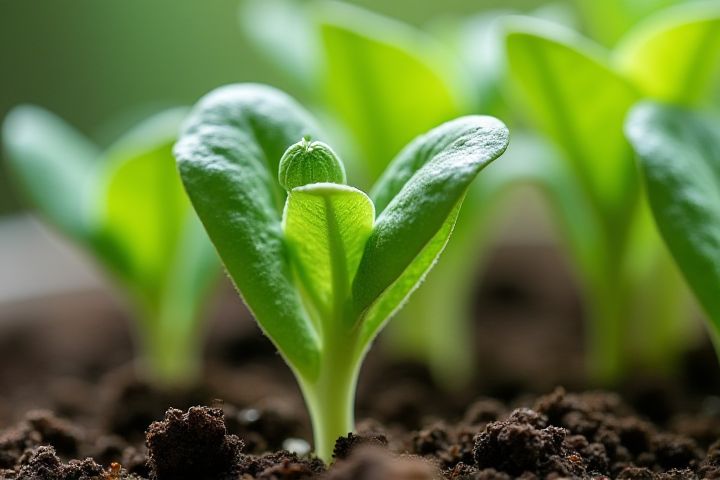
House plants benefit significantly from fertilization as it replenishes essential nutrients in the soil. During the growing season, typically spring and summer, using a balanced fertilizer promotes better growth and enhances leaf color and overall health. You should select a fertilizer that matches the specific needs of your plant species, whether it's a high-nitrogen option for leafy plants or a phosphate-rich variant for flowering varieties. It's important to avoid over-fertilizing, as this can lead to root burn and other issues. Regularly assessing your plant's health can guide you on when and how much to fertilize for optimal growth.
Should House Plants Be Fertilized
Type of plant
Fertilizing house plants largely depends on their specific type and growth needs. For example, flowering plants like African violets benefit from a balanced fertilizer that supports vibrant blooms, while foliage plants such as pothos thrive on a nitrogen-rich formula to enhance lush growth. Succulents and cacti require much less fertilization, typically needing only a diluted fertilizer during the growing season to prevent nutrient overload. Understanding the requirements of your particular house plants ensures optimal health and promotes vigorous growth.
Growth stage
During the growth stage, houseplants benefit significantly from fertilization, as this period typically occurs in spring and summer when light and temperature conditions promote vigorous growth. A balanced fertilizer containing equal parts nitrogen, phosphorus, and potassium, such as a 10-10-10 ratio, can enhance leaf development, flower production, and overall health. You should consider applying fertilizer every 4 to 6 weeks, adjusting the frequency based on the specific needs of your plant species and the nutritional content of the potting soil. Monitoring signs of nutrient deficiency, like yellowing leaves or stunted growth, can help you tailor your fertilization schedule effectively.
Fertilizer type
House plants benefit significantly from the right type of fertilizer, which typically falls into three categories: granular, liquid, and slow-release. Granular fertilizers, often high in nitrogen, phosphorus, and potassium (N-P-K ratio), can provide essential nutrients over an extended period when mixed into the soil. Liquid fertilizers are ideal for quick nutrient absorption, especially during the active growing season, and are generally more concentrated, requiring dilution before application. Slow-release fertilizers gradually supply nutrients over time, reducing the need for frequent feedings and helping to maintain optimal soil health.
Soil quality
Fertilizing houseplants is essential for maintaining optimal soil quality, which directly impacts plant health and growth. Regularly enriched soil provides the necessary nutrients, such as nitrogen, phosphorus, and potassium, that your plants require to thrive. Consider using slow-release fertilizers every 4-6 weeks during the growing season, as this promotes sustained nutrient availability. Additionally, testing your soil's pH should be a regular practice, with most houseplants thriving in a range of 6.0 to 7.0 for optimal nutrient absorption.
Watering schedule
Your house plants thrive when you maintain a consistent watering schedule, typically every 7 to 14 days, depending on the species and environmental conditions. Over time, essential nutrients in the soil deplete, making fertilization crucial; consider using a balanced fertilizer every 4 to 6 weeks during the growing season. Monitor the moisture level of the soil, as underwatering or overwatering can hinder nutrient absorption, affecting plant health. Adjust your watering frequency based on seasonal changes, ensuring that your plants receive optimal hydration and nourishment for robust growth.
Frequency of fertilization
House plants typically require fertilization every 4 to 6 weeks during the growing season, which usually spans from spring to early fall. In contrast, during the dormancy period in winter, you can reduce or eliminate fertilization entirely, as plants' nutrient uptake slows significantly. It's essential to follow the instructions on your specific fertilizer, as variations exist in concentration and formulation. Over-fertilization can harm your plants, leading to nutrient burn, so monitor their health and adjust frequency based on growth and appearance.
Signs of nutrient deficiency
House plants require appropriate fertilization to thrive, and identifying signs of nutrient deficiency is crucial for their health. Yellowing leaves often indicate nitrogen deficiency, while browning leaf tips may signal potassium deficiency. If you notice slow growth or stunted development, your plants may be lacking essential nutrients like phosphorus. Regularly monitoring your plants allows you to address nutrient imbalances and provide the necessary care for optimal growth and vibrancy.
Over-fertilization risks
Over-fertilization of house plants can lead to nutrient burn, manifesting as brown leaf tips or wilting. Excessive nutrients in the soil increase salinity, making it difficult for plants to absorb water, thus stunting growth. A balanced fertilization schedule, typically every 4-6 weeks during the growing season, is essential to avoid these issues. Monitoring plant health and adjusting fertilization based on soil test results can help you maintain optimal growing conditions.
Seasonal variation
Houseplants benefit from fertilization, especially during the growing season, which typically spans from spring to early fall. During these months, plants actively absorb nutrients, so applying a balanced fertilizer every 4-6 weeks can enhance growth and vigor. In contrast, during the winter months, growth slows significantly, and fertilization should be reduced or eliminated, as plants require fewer nutrients in this dormant phase. Understanding this seasonal variation can help you optimize your plant care practices, ensuring lush and healthy foliage year-round.
Organic vs synthetic options
Fertilizing houseplants enhances growth and vitality, with organic options like compost, worm castings, or fish emulsion offering gradual nutrient release and improved soil health. Synthetic fertilizers, containing concentrated nutrients, provide quick fixes but can lead to salt buildup and potentially harm beneficial microorganisms in the soil. You should consider that organic fertilizers often enhance the plant's resistance to pests and disease over time, while synthetics may require more frequent application. Research indicates that using organic options can contribute to more sustainable gardening practices, aligning with eco-friendly values.
